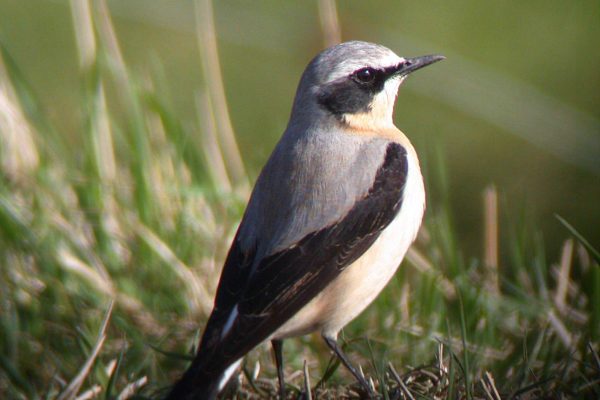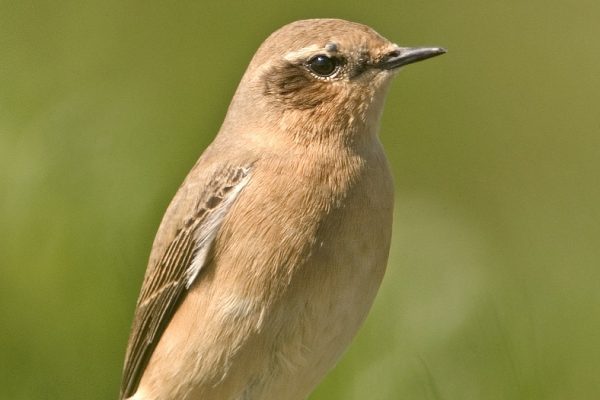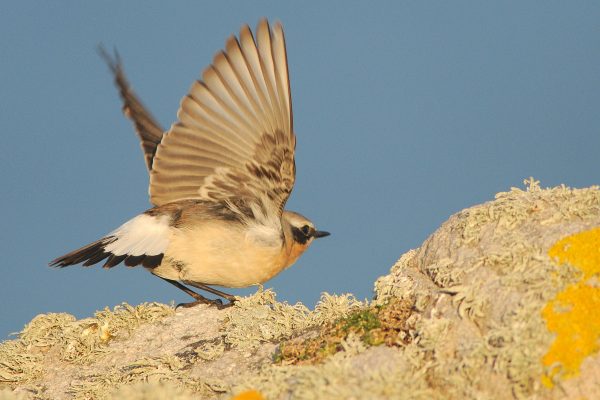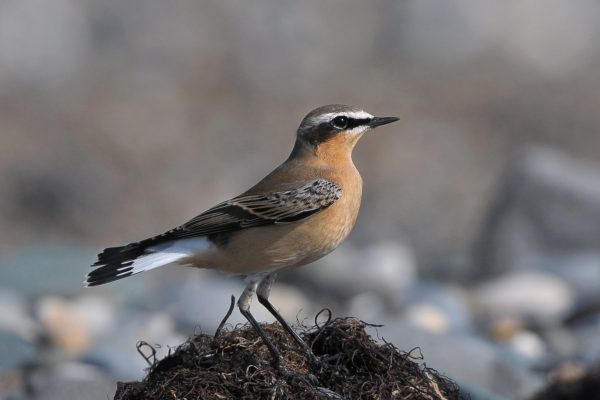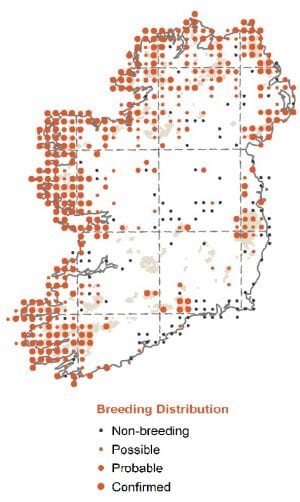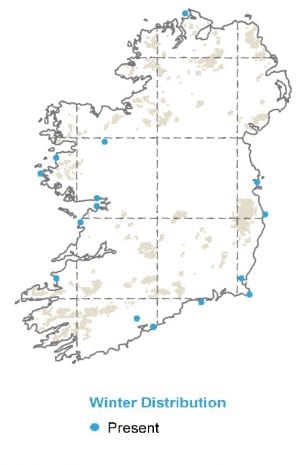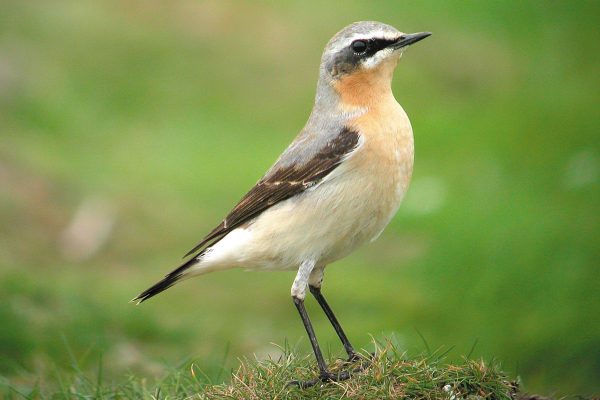
Wheatear
| Irish Name: | Clochrán |
| Scientific name: | Oenanthe oenanthe |
| Bird Family: | Chats |
amber
Conservation status
Conservation status
Status
Widespread summer visitor to uplands and scrubland throughout Ireland, from mid-March to early-October. Common passage migrant to all coasts in spring and autumn.
Identification
Between Robin and Song Thrush in size. In all plumages, has a very obvious tail pattern of a broad lack stripe at the tip with another extending towards the white rump. The whole effect is of a black "T". Adult summer male Wheatears have a pale grey crown, nape and back, as well as a broad black stripe extending from the beak through the eye to the neck. Also has a thin white supercilium. The throat and top of the breast are beige-brown, varying in extent and intensity, while the rest of the underparts are white. The wings are all black. Autumn males have the grey on the crown and back replaced with pale brown, while the black "eye-mask" is reduced in intensity and may be completely absent (cf first-winter and autumn female). Adult summer females resemble summer males, but lack the black "eye-mask", this being a pale brown instead. The white supercilium also tends to be less obvious. Autumn females are very similar to autumn male Wheatears, but never show the black "eye-mask". Juveniles have a streaked grey head and back, as well as a finely barred breast. The wings are brown. This plumage is lost a few weeks after fledging. First-winter Wheatears are nearly inseperable from autumn females.
Voice
Main calls heard are a soft whistle "hiit" and a harder "chack". The song is quick, melodic whistle, frequently including the "hiit" call note. May perform a short song-flight.
Diet
Insects and other invertebrates.
Breeding
Breeds in a variety of habitats, typically with some areas of exposed rock and short vegetation, such as along rocky coasts, pasture with stone walls and bogs in uplands.
Wintering
Winters in southern Africa. Has one of the longest migration routes of any songbird. Birds breeding in north-eastern Canada fly almost non-stop across the northern Atlantic to Iberia and North Africa.
Monitored by
Blog posts about this bird
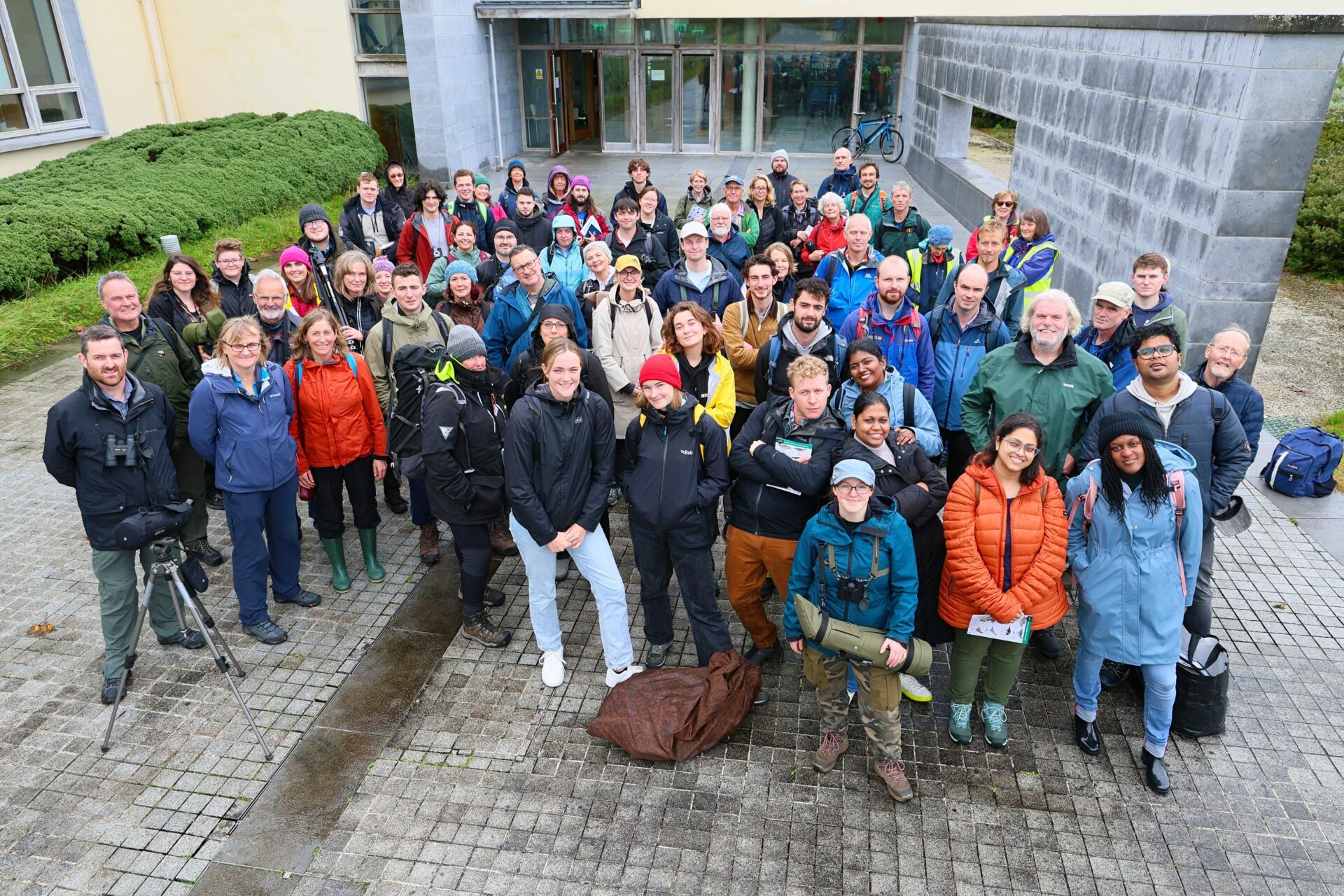
Record attendance at I-WeBS workshops highlights public appetite to support biodiversity
The high attendance at two recent introductory Irish Wetland Bird Survey (I-WeBS) workshops in Galway highlighted an increasing public desire to learn about and support biodiversity.
Organised by BirdWatch Ireland in collaboration with Galway County Council and Galway City Council with the support of the NPWS, the workshops were aimed at showing birdwatchers how they can help monitor wintering waterbird populations at Inner Galway Bay and in turn, inform their conservation. Additionally, BirdWatch Ireland also hoped to recruit new skilled I-WeBS observers to survey this important site during the 2023/ 24 season.
Over 120 people attended the workshops across the two days. The training days, which involved a combination of informative talks about the I-WeBS survey followed by an outdoor field method demonstration, were held on the 23rd September at Knocknacarra Community Centre and the 6th of October the Marine Institute. Within the talks, attendees found out about why it is so important to survey our wintering waterbirds as well as some hot tips for identifying and counting waterbirds. To pick up some tips and tricks for identifying waterbirds, take a look at the I-WeBS training tools.


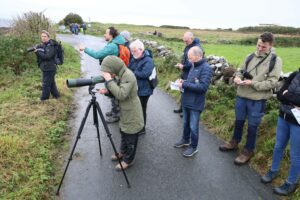
Workshop participants getting a glimpse of some interesting waterbirds at Rinville.
The outdoor portion of the events – which took place at Rusheen Bay and Rinville – proved fruitful, offering views of waterbirds such as Lapwing, Curlew, Turnstone and Sandwich Terns, to name but a few. Although not a waterbird, the sight of a beautiful female Wheatear hopping along the nearby rocks was a delightful bonus. Attendees brought with them a wealth of relevant experiences, skills and interests, with a high number of local university students and ecological consultants particular taking part. The interactive and informative workshops have thus far resulted in the recruitment of 30 new I-WeBS volunteers for Inner Galway Bay, with many more attendees choosing to sign up to survey at other sites. Meanwhile, the events inspired many more to get involved with their local Galway Branch of BirdWatch Ireland. In addition to boosting survey volunteer numbers, the recent events also offered a fantastic platform to spread the word about I-WeBS – a National Parks and Wildlife Service (NPWS) funded monitoring project that has been running since 1994. Every year between September and March, close to 500 I-WeBS volunteers record wintering waterbirds at important wetland sites around the country. Irish wetlands are extremely important for the survival of these birds and I-WeBS keeps track of how these birds are faring so that informed conservation action can be taken.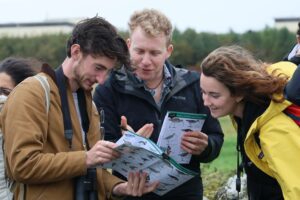
Participants working together to identify birds at Rinville.
The recent I-WeBS workshops focused predominantly on Inner Galway Bay – an internationally important site for wintering waterbirds, hosting over 20,000 birds every season. Inner Galway Bay is a site of international importance for the Great Northern Diver and Light-bellied Brent Goose, meaning that it regularly supports one per cent or more of the flyway population of these species. It is also a site of national importance for many birds, including Red-listed species such as Shoveler, Grey Plover, Dunlin, Redshank, Black-tailed Godwit, Bar-tailed Godwit and Lapwing. In all, the workshops proved to be a great success, in large part due to the strong collaboration between BirdWatch Ireland, BirdWatch Ireland’s Galway Branch, Galway County Council, Galway City Council, the Marine Institute and Knocknacarra Community Centre. BirdWatch Ireland is particularly grateful to Galway County Council and Galway City Council for funding binoculars and telescopes, which will be available for survey volunteers to rent from Galway City Library.
